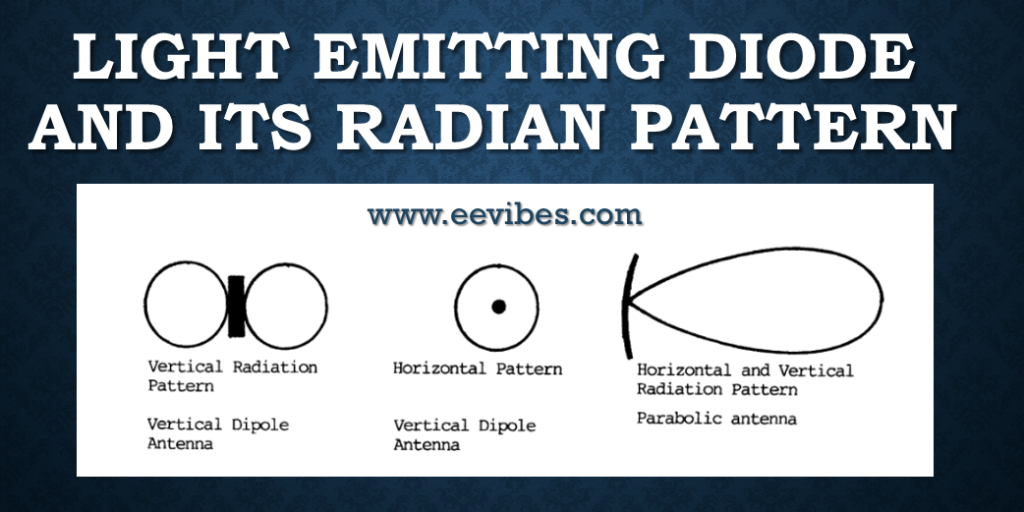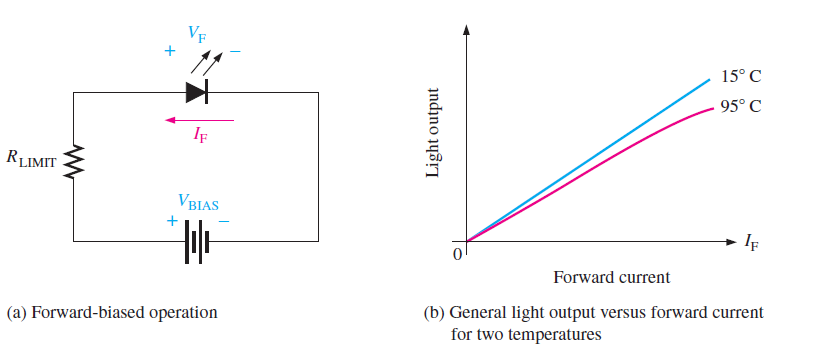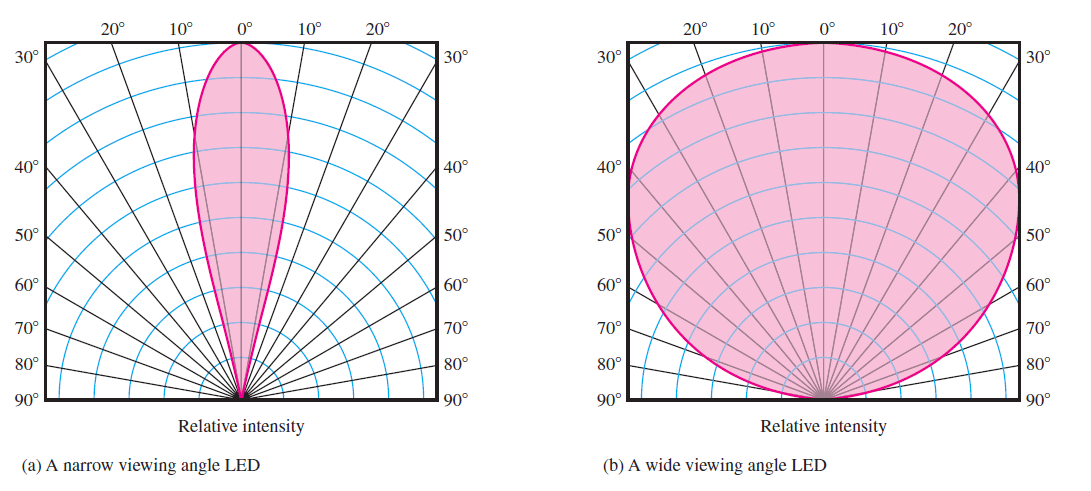
Introduction to LED
LEDs have revolutionized the lighting industry with their energy efficiency, longevity, and versatility. In this article, we will explore the light emitting diode and its radian patterns, its wide range of applications, and the recent advancements that have propelled its adoption in various fields. So, let’s delve into the fascinating world of LEDs.
What is an LED?
An LED is a semiconductor device that emits light when an electric current passes through it. It operates on the principle of electroluminescence, where the movement of electrons within the semiconductor material produces light.
Structure:
An LED typically consists of a semiconductor chip (die) that is encapsulated in a transparent or colored epoxy resin.
The chip is connected to electrical leads, known as anode and cathode, which provide the necessary current for light emission.
- Principles of Operation:
- Electroluminescence:
LEDs are based on the phenomenon of electroluminescence, where electrons recombine with electron holes within the semiconductor material, releasing energy in the form of photons.
Semiconductor Materials:
LEDs are predominantly made using compound semiconductor materials, such as gallium arsenide (GaAs), gallium nitride (GaN), and indium gallium nitride (InGaN).
The choice of materials determines the LED’s wavelength and color of light emitted.
Energy Band Gap:
The energy band gap of the semiconductor material determines the energy and, hence, the color of light emitted.
By controlling the composition of the semiconductor material, LEDs can be designed to emit various colors, including red, green, blue, and beyond.
III. Applications of LEDs:
Lighting:
LEDs have transformed the lighting industry, offering energy-efficient and long-lasting lighting solutions for residential, commercial, and industrial purposes.
They are used in general lighting, architectural lighting, automotive lighting, and even in specialized applications like horticulture lighting.
Displays and Signage:
LEDs are extensively used in displays and signage, such as LED billboards, scoreboards, digital signage, and alphanumeric displays.
Their ability to emit vibrant colors, high brightness, and sharp contrasts makes them ideal for these applications.
Consumer Electronics:
LEDs are ubiquitous in consumer electronics, including smartphones, televisions, laptops, and gaming consoles, providing backlighting for displays and indicating device status.
Automotive Lighting:
LEDs are increasingly being adopted in automotive lighting systems, including headlights, taillights, brake lights, and interior lighting, offering improved energy efficiency, durability, and design flexibility.
- Advancements and Future Trends:
- Efficiency Improvements:
Advances in LED technology have led to significant improvements in efficiency, resulting in higher luminous efficacy and reduced energy consumption.
Color Tunability:
Researchers have made strides in developing LEDs with tunable colors, allowing dynamic adjustments to meet specific lighting requirements, such as color temperature and circadian lighting.
Miniaturization and Flexibility:
Miniature LEDs and flexible LEDs are gaining popularity, enabling new form factors and applications, such as wearable technology, flexible displays, and smart textiles.
Quantum Dot LEDs (QLEDs):
Quantum dot LEDs utilize nanocrystals called quantum dots to enhance color purity, widen the color gamut, and improve efficiency, holding promise for future display and lighting applications.
LED Biasing
Light Emitting Diode and its Radian Pattern. Compared to a silicon diode, an LED has a forward voltage across it that is significantly higher. Depending on the material, the maximum VF for LEDs is typically between 1.2 V and 3.2 V. Compared to a silicon rectifier diode, an LED experiences far less reverse breakdown (3 V to 10 V is normal).
Following Figure illustrates how an adequate forward current causes the LED to emit light. As shown in Figure below, the quantity of power output converted into light is exactly proportional to the forward current. The amount of light produced increases proportionally to an increase in IF. Temperature has an impact on both the color and intensity of the light emission. As shown in the graph, light intensity decreases as temperature rises.

Typical Spectral Output Curves for LEDs
The spectral output curves are shown that an LED emits light over a specific range of wavelengths. The curve in part (b) is for a typical infrared LED, and the curve in part (a) is the light output vs wavelength for common visible LEDs.
LED. The unit of wavelength measurement is nanometers (nm). The visible red LED’s normalized output peaks at 660 nm, the yellow LED at 590 nm, the green LED at 540 nm, and the blue LED at 460 nm. The infrared LED’s output reaches its maximum at 940 nm.

Radiation Patterns for Two Different LEDs
The graphs in the following figure illustrate typical LED radiation patterns for tiny devices. Unlike filament or fluorescent bulbs, LEDs are directional light sources. The radiation pattern is typically perpendicular to the emitting surface, although it can be influenced to favor one direction by the form of the emitter surface, lenses, and diffusion layers.
For some applications, like traffic lights, where the light is only meant to be seen by specific cars, directional patterns can be advantageous. The pattern for a forward-directed LED, like those found in tiny panel indicators, is depicted in figure part (a). The pattern with a broader viewing angle, like those found in many super-bright LEDs, is depicted in figure part(b).

LED Manufacturers
There are several manufacturers of LEDs (Light-Emitting Diodes) in the market. Here are some well-known LED manufacturers:
Nichia Corporation: Nichia is a Japanese company and one of the world’s largest LED manufacturers. They are known for their high-quality LEDs and have a wide range of products for various applications.
Cree, Inc.: Cree is an American company that specializes in LED lighting and semiconductor products. They are known for their innovative LED technology and have a strong presence in the market.
Lumileds: Lumileds is a global leader in LED technology and a subsidiary of the Dutch company Royal Philips. They offer a broad portfolio of LED products, including high-power LEDs for lighting applications.
Osram Opto Semiconductors: Osram is a German company that manufactures optoelectronic semiconductors, including LEDs. They offer a wide range of LED products for general lighting, automotive lighting, and specialty lighting applications.
Seoul Semiconductor: Seoul Semiconductor is a South Korean company that produces LED products for various applications. They are known for their high-performance LEDs and have developed innovative technologies like Wicop and Acrich.
Everlight Electronics Co., Ltd.: Everlight is a Taiwanese company that manufactures LEDs and optoelectronic components. They offer a diverse range of LED products, including through-hole, surface-mount, and high-power LEDs.
Epistar Corporation: Epistar is a Taiwanese LED manufacturer and one of the largest LED chip producers globally. They focus on LED chip design and production, supplying chips to various LED packaging companies.
Samsung LED: Samsung is a well-known Korean conglomerate that produces a wide range of products, including LEDs. They offer LED products for various applications, such as general lighting, displays, and automotive lighting.
Bridgelux, Inc.: Bridgelux is an American company that specializes in LED lighting solutions. They offer a range of LED products, including chips, arrays, and modules, with a focus on energy efficiency and high performance.
LG Innotek: LG Innotek is a subsidiary of the LG Group and manufactures a variety of electronic components, including LEDs. They provide LEDs for general lighting, automotive lighting, and display applications.
Please note that this list is not exhaustive, and there are many other manufacturers of LEDs in the market. The LED industry is dynamic, and new players continue to emerge as the technology advances. Light Emitting Diode and its Radian Pattern
LED and the Market Trend
LED (Light-Emitting Diode) technology has seen significant growth and has become increasingly popular in various industries. Here are some market trends related to LEDs:
Energy Efficiency:
LED lighting is highly energy-efficient compared to traditional lighting technologies such as incandescent bulbs and fluorescent lamps. LEDs consume less power while providing the same or better illumination, making them a preferred choice for energy-conscious consumers and businesses. The demand for energy-efficient lighting solutions has been a driving force behind the LED market’s growth.
Cost Reduction:
Over the years, the cost of LED technology has significantly decreased, making it more affordable for a wide range of applications. This cost reduction has resulted from advancements in manufacturing processes, economies of scale, and improvements in LED efficacy. As LED prices continue to drop, they become increasingly competitive with other lighting options.
Longer Lifespan:
LEDs have a significantly longer lifespan compared to traditional lighting sources. LED bulbs can last up to 25 times longer than incandescent bulbs and several times longer than fluorescent lamps. The longer lifespan reduces maintenance and replacement costs, particularly in commercial and industrial settings where lighting is often used for extended periods.
Environmental Sustainability:
LED lighting is considered more environmentally friendly due to its energy efficiency and lower carbon footprint. LEDs consume less electricity, leading to reduced greenhouse gas emissions. Additionally, LEDs do not contain hazardous materials such as mercury, which is commonly found in fluorescent lamps. The growing focus on sustainability and environmental regulations has fueled the adoption of LED lighting.
Smart Lighting and Internet of Things (IoT) Integration:
LEDs can be easily integrated into smart lighting systems and connected to the Internet of Things (IoT). This allows for advanced features such as remote control, dimming, color tuning, and automated lighting control. The integration of LED lighting with IoT technology has opened up new opportunities for energy management, customization, and enhanced user experiences.
Automotive Lighting:
LEDs have become a popular choice for automotive lighting applications. They are used in headlights, taillights, interior lighting, and other automotive lighting functions. LED technology offers improved visibility, energy efficiency, and design flexibility for automotive manufacturers.
Display Technology:
LEDs are widely used in display applications, including televisions, computer monitors, and digital signage. The demand for high-resolution displays with better color accuracy and energy efficiency has driven the adoption of LED backlighting and direct LED display technologies.
Horticulture Lighting:
LEDs are increasingly used in horticulture and indoor farming to provide specific light spectra for plant growth. LED grow lights can be customized to deliver the ideal wavelengths required for different stages of plant development, resulting in improved crop yields, energy efficiency, and reduced dependence on natural sunlight.
It’s important to note that the LED market is dynamic, and these trends may continue to evolve as technology advances and new applications emerge.
Conclusion
In conclusion, light-emitting diodes (LEDs) have revolutionized the lighting and display industries with their energy efficiency, longevity, and versatility. Their applications span across lighting, displays, consumer electronics, and automotive lighting. With ongoing advancements in efficiency, color tunability, miniaturization, and quantum dot technology, LEDs continue to evolve and open up new possibilities for lighting and beyond. As we move forward, we can expect further breakthroughs in LED technology, shaping the future of illumination and visual communication. Thank you.
Also read here: